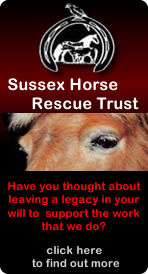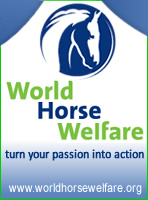
Horseytalk.net Special Interview
Animal Health Trust
IS YOUR HORSE NAUGHTY OR IS HE IN PAIN? THE ANSWER IS WRITTEN ALL OVER HIS FACE...
 Facial expressions research at the Animal Health Trust will help vets and owners recognise pain in ridden horses before it's too late.
Facial expressions research at the Animal Health Trust will help vets and owners recognise pain in ridden horses before it's too late.
Experts at the Animal Health Trust (AHT) Equine Clinic are on a mission to help vets and owners recognise pain in ridden horses, so that they can get help before it's too late. Owners, riders, trainers and some vets are known to struggle with recognising when a horse is lame from looking at horse's gait alone, and some lameness is so subtle that only an expert eye can see it.
Owners, riders and trainers also have a poor ability to recognise signs of pain seen when horses are ridden. As a result, problems are often labelled as training-related or behavioural (the horse is just being naughty), or deemed 'normal' for that horse because 'that's how he's always gone'. Unfortunately that means pain-related problems are often disregarded, the horse continues in work, and the problem gets progressively worse. If pain goes unrecognised and is not referred to a lameness specialist early enough, problems become too advanced to be resolved, or managed as well as they might have been if spotted sooner.
 Many people will have heard to be wary of a horse when he puts his ears back, or would see a horse is spooked if he flares his nostrils and shows the whites of his eyes. So if spotting pain and lameness itself is a specialist art, perhaps it would be better to educate people to recognise changes in facial expressions. That's why Dr Sue Dyson, Head of Clinical Orthopaedics at the AHT, and her team have developed an ethogram to help them identify signs of pain from a horse's facial expressions when being ridden.
Many people will have heard to be wary of a horse when he puts his ears back, or would see a horse is spooked if he flares his nostrils and shows the whites of his eyes. So if spotting pain and lameness itself is a specialist art, perhaps it would be better to educate people to recognise changes in facial expressions. That's why Dr Sue Dyson, Head of Clinical Orthopaedics at the AHT, and her team have developed an ethogram to help them identify signs of pain from a horse's facial expressions when being ridden.
The ethogram is a catalogue of facial expressions including the ears, eyes, nose, muzzle, mouth and head position. Each body part can display an expression which may be normal, or reflect pain, conflict behaviour or distress. In its first stage of testing, the ethogram was successfully applied by a variety of people from different backgrounds, to a selection of photographs of horses' heads while they were ridden. Using the ethogram these individuals could identify different expressions in each horse, such as positions of the ears, changes in the eyes, and tightness in the muzzle. The results were highly repeatable among the analysts proving that, with guidance from the ethogram, owners could potentially reliably recognise different expressions in their horse's face.
Stage two has now been successfully completed, testing if the ethogram could be used to distinguish between sound and lame horses. During this phase a pain score from 0 - 3 was applied to each of the facial expressions (mouth, eyes, ears etc.), and then totalled to determine an overall pain score for each horse. 519 photos of horses which had been categorised by Sue to be lame or sound were assessed. An amazing total of 27,407 facial markers were recorded, with results showing that there was a scientifically significant difference in pain scores given by the assessor for clinically lame and sound horses.
The facial markers showing the greatest significant difference between lame and sound horses included ears back, tipping the head, eyes partially or fully closed, tension around the eye, an intense stare, an open mouth with exposed teeth and being severely above the bit. To further prove the effectiveness of assessing pain in a horse with the facial expressions ethogram, a selection of lame horses underwent lameness assessment and nerve blocking (using local anaesthetic solution), to alleviate the pain causing them discomfort when ridden. Comparison of their facial expressions before and after using local analgesia showed a significantly lower pain score once the pain causing lameness had been removed.
 By focusing on the face, Sue has proved not only that it is a clear indicator or pain, but also that owners, riders and trainers could successfully apply this to horses they see on a daily basis. Recognition of changes in facial expression could potentially save horses from needless suffering and chronic injuries, by enabling owners and trainers to recognise pain sooner, and get these horses the veterinary care that they need.
By focusing on the face, Sue has proved not only that it is a clear indicator or pain, but also that owners, riders and trainers could successfully apply this to horses they see on a daily basis. Recognition of changes in facial expression could potentially save horses from needless suffering and chronic injuries, by enabling owners and trainers to recognise pain sooner, and get these horses the veterinary care that they need.
Developing a practical tool for recognising facial expressions, similar to that of a body condition score chart (identifying if a horse is under or over weight), could dramatically improve the health and welfare of all horses – which is something Sue and her team at the Animal Health Trust continue to work towards. For Sue and her team the study does not end here, with the next exciting stage of the project already underway with the development of a whole horse ethogram.
To find out more about how our research helps horses today, tomorrow and forever, visit: http://www.aht.org.uk/cms-display/equiness.html


